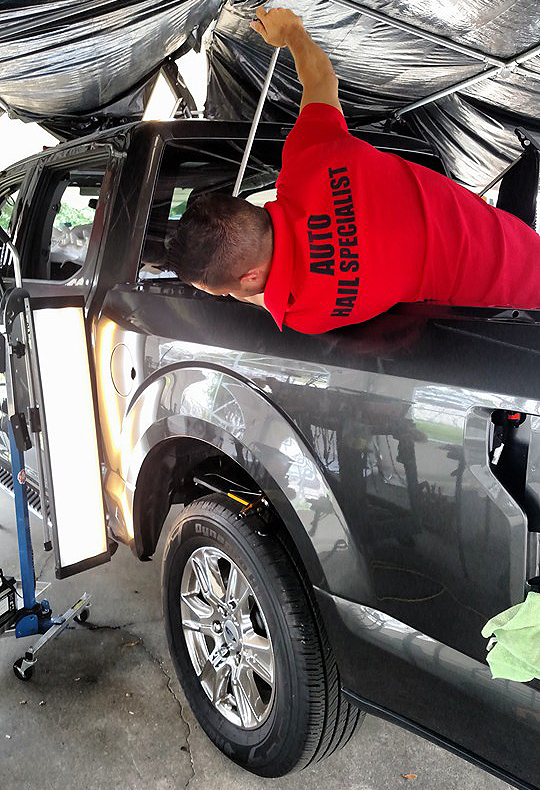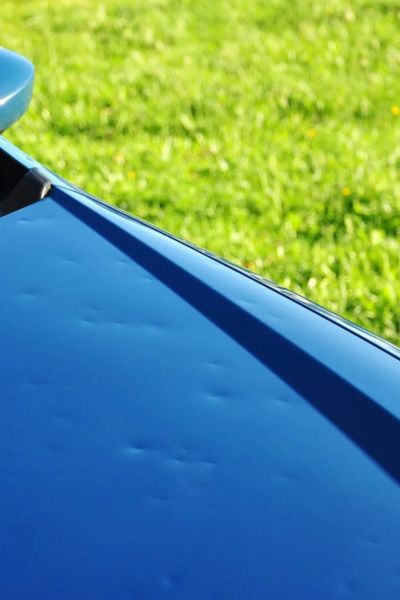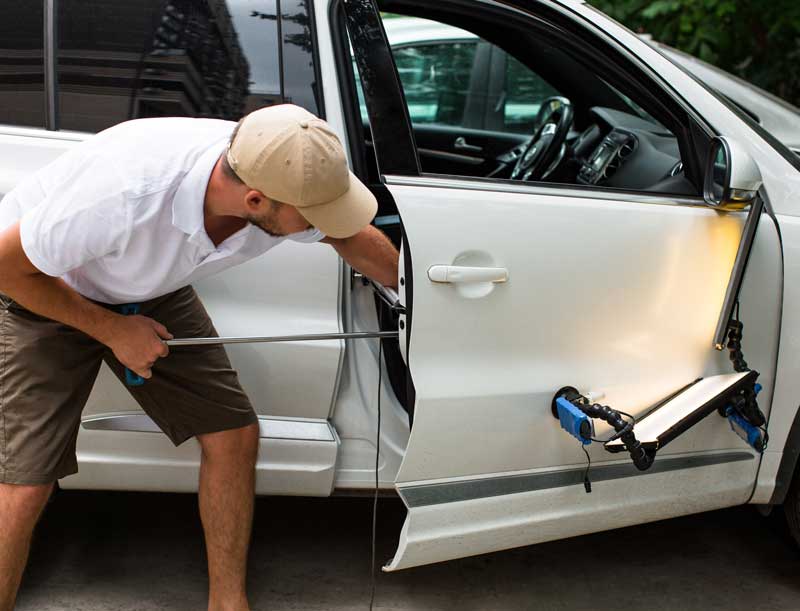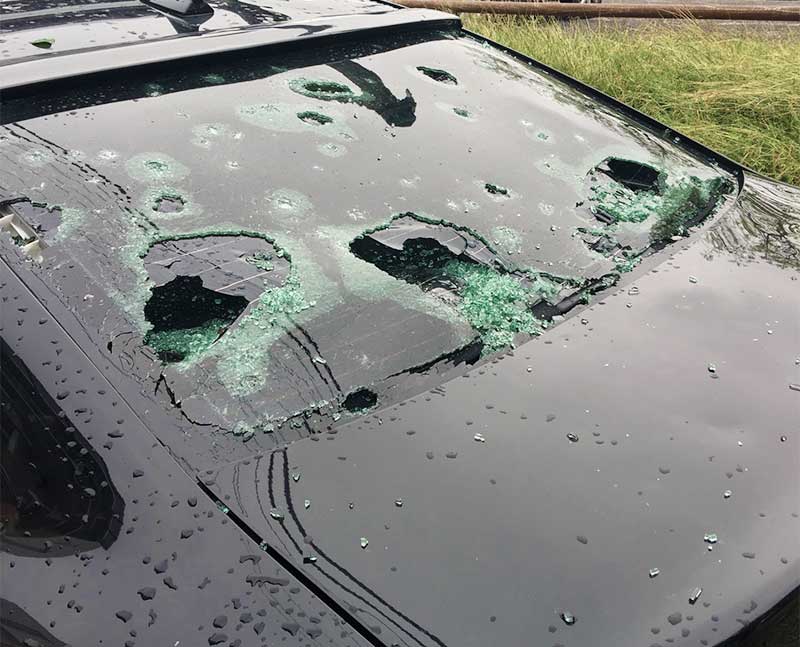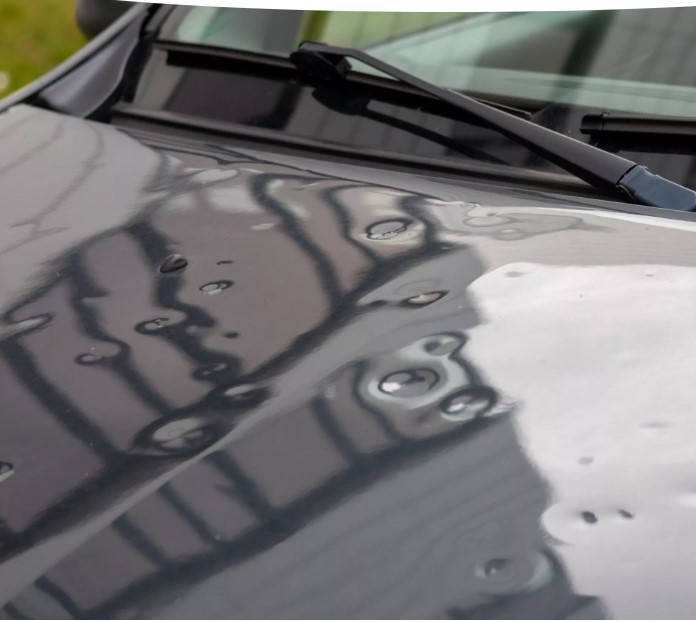Repair Hail Dents: Making the Right Choice for Your Vehicle
Hail damage is a formidable adversary, and as vehicle owners, understanding its impact and the diverse ways to address it is key. Hail dents – those frustrating and unsightly imperfections – can leave any vehicle owner feeling a mixture of frustration and helplessness. This blog on how to repair hail dents is not just another guide – it’s your ticket to understanding the science behind hail damage and how to restore your vehicle's beauty. Whether you're a devoted automotive enthusiast, a conscientious car owner, or someone who simply wants to save money and protect your investment, this blog has something for everyone.
Know your Opponent – Hailstorms and Vehicle Damage
The first step to knowing how to repair hail dents is understanding how the damage occurs. Hail damage isn't just an inconvenience. It's the result of a meteorological force of nature that can leave your vehicle battered and bruised. To effectively repair these dents, it's essential to grasp the science behind hailstorms and their impact on your vehicle's exterior.
Before you begin your project to repair hail dents, learn how they occur in the first place. Hailstorms are a type of meteorological phenomenon that can occur during severe weather. Updrafts within a thunderstorm typically carry raindrops into extremely cold areas of the atmosphere, resulting in the formation of these storms. These supercooled water droplets condense into ice pellets, which subsequently form hailstones. The bigger the hailstone, the more damaging it can be.
When hailstones reach a certain size and weight, they fall to the ground with considerable force. The impact of these frozen projectiles on your vehicle's delicate exterior can cause a wide range of damage, most notably dents and surface imperfections.
Hail damage doesn't discriminate – it can affect any part of your vehicle. However, certain areas are more vulnerable than others. Commonly affected parts include the hood, roof, trunk, and the upper surfaces of the vehicle. These areas are more exposed to the direct impact of hailstones.
Whatever the impact, be prepared to repair hail dents at the earliest chance.
Repair Hail Dents Professionally – An Affordable Option
Hail damage is more than just a cosmetic issue. It has a significant economic impact that goes far beyond the initial annoyance of discovering dents on your vehicle. However, there is some good news: even without insurance, professional hail damage repair can be affordable.
Professional hail dent repair is frequently less expensive than many vehicle owners realize, and it has several advantages. Even if you don't have hail insurance, hiring a professional to repair hail dents can be a cost-effective solution.
Precision Maintenance
Paintless dent repair (PDR) and other specialized techniques used by professional technicians can target and repair dents with remarkable precision. This means that they can often repair hail damage without having to repaint or replace expensive parts.
Preserving Resale Value
Prompt and professional services to repair hail dents can help preserve the resale value of your vehicle. A well-kept vehicle with a clean exterior is more appealing to potential buyers, and you'll recoup your repair costs when you sell.
Preventing Further Damage
Ignoring hail damage can lead to more serious problems in the long run. Water can seep into dented areas, potentially causing rust and corrosion, which can be costly to repair in the long run.
Peace of Mind
Last but definitely not least, professional repair ensures that your vehicle is returned to its original condition. This not only improves its aesthetic appeal but also gives you peace of mind knowing that your vehicle is secure.
The Costs of Neglecting Hail Damage
While hail damage may appear to be a minor inconvenience, the consequences of ignoring these dents and imperfections can be significant, affecting not only your vehicle but also your finances and peace of mind. Here's a closer look at the consequences of ignoring hail damage.
Reduced Resale Value
One of the most obvious and immediate costs of choosing to not repair hail dents is a decrease in your vehicle's resale value. When you decide to sell or trade in your vehicle, potential buyers or dealers will frequently inspect the vehicle's exterior. Unrepaired hail damage can significantly reduce the perceived value of your vehicle, resulting in lower offers and lower profits.
Accumulating Damage
Hail damage does not stay static; it can lead to more serious and expensive problems over time. If left untreated, dented areas can rust and corrode. Moisture can penetrate damaged paint and bodywork, and rust can compromise your vehicle's structural integrity. Repairing rust and corrosion can be far more expensive than repairing hail damage.
Aesthetics and Image
The appearance of your vehicle is important because it reflects your personal image. Neglected hail damage can reduce the aesthetic appeal of your vehicle and affect your sense of pride and confidence. It's not just about the vehicle's physical condition, but also about how you perceive it and how others perceive you.
Safety Concerns
Depending on the severity of the hail damage, it may jeopardize your vehicle's safety. Dents and structural damage can make certain parts, such as doors, hoods, and trunk lids, malfunction. In severe cases, hail dents can compromise the integrity of airbags, sensors, or electrical components, putting you and your passengers at risk.
Higher Insurance Premiums
While you don’t necessarily need insurance to repair hail dents, ignoring hail damage can have long-term financial consequences if you have insurance. When determining premiums, insurance companies frequently consider a vehicle's overall condition. Unrepaired hail-damaged vehicles may be considered a higher risk, resulting in higher insurance costs in the long run.
Repair Hail Dents – How Much Will It Cost?
Before you start to repair hail dents on your vehicle, it is important to know the factors that will affect the cost of repair. Repairing hail damage can be a crucial step in preserving the value and integrity of your vehicle. However, the costs associated with hail dent repair can vary widely based on a range of factors. Understanding what influences repair costs can help you make informed decisions and effectively manage your budget.
Severity and Extent of Damage
The degree and nature of the hail damage is perhaps the most important factor influencing repair costs. Minor dents and dings may be relatively inexpensive to repair, whereas extensive damage that covers large areas of the vehicle or affects critical components can be significantly more expensive.
Dent Size and Depth
The size and depth of the dents influence the cost of repairs. Smaller, shallower dents are usually less difficult and less expensive to repair than larger, deeper ones. Deep dents that have cracked the paint or stretched the metal may take longer and require more skill to repair.
Dent Location
The location of your vehicle's dents can also affect repair costs. Dents on a flat surface that are easily accessible are typically less expensive to repair than those in complex or hard-to-reach areas, such as along edges or contours.
Repair Method
The method you choose to repair hail dents can significantly affect the cost. Paintless Dent Repair (PDR) is often a more cost-effective option compared to traditional methods, as it doesn't involve repainting and can be completed more quickly. However, if the damage is severe and traditional repairs are necessary, costs can rise.
Conclusion
While opting to repair hail dents might not be at the top of your to-do list, it's a vital step in preserving the value and longevity of your automobile. Hail damage can strike when you least expect it, leaving you with a choice: tackle the dents head-on or risk the long-term consequences of neglect.
Whether you opt for do-it-yourself solutions or seek professional assistance, taking action is the key. So, act promptly, knowing that you've made the right choice for your automotive companion.

